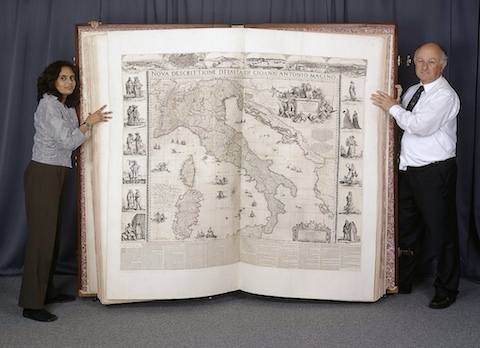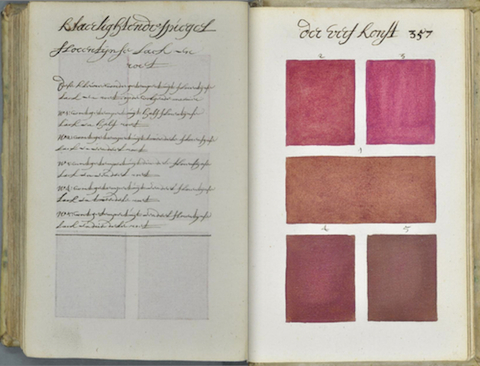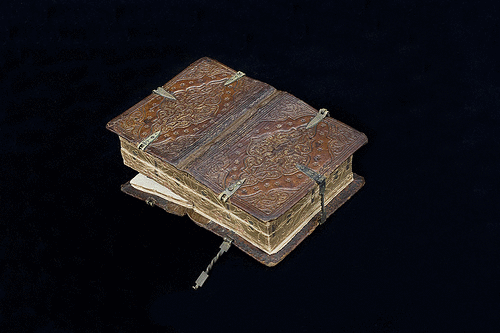
Leiden University book historian Erik Kwakkel describes his tumblr site as follows: “I post images from medieval books.” In the words of Samuel L. Jackson on the immortal Snakes on a Plane, you either want to see that, or you don’t. Presuming you do (and given your presumable status as an Open Culture reader, it strikes me as a safe bet) know that Kwakkel doesn’t maintain just any old images of medieval books; his posts tend to highlight the askew, the obscure, and the innovative, further demonstrating that we need not find the “dark ages” dull. At the top of the post, you can see one photo of the several he posted of the biggest books in the world, in this case the “famous Klencke Atlas” from the 16th century. “While they are rare, such large specimens,” writes Kwakkel, “they do represent a tradition. Choir books, for example, needed to be big because they were used by a half circle of singers gathered around it in a church setting. If you are impressed with the size of these objects, just imagine turning their pages!”

Above, we have an example of what Kwakkel calls “Siamese twins,” two books bound as one using an odd binding “called ‘dos-à-dos’ (back to back), a type almost exclusively produced in the 16th and 17th centuries.” You could read one text one way, then turn the thing over and read a whole other text the other way. “You will often find two complementary devotional works in them, such as a prayerbook and a Psalter, or the Bible’s Old and New Testament. Reading the one text you can flip the ‘book’ to consult the other” — no doubt a handy item, given the religious priorities of the average reader in the Europe of that era. The animated image below highlights a related and equally unusual binding effort, a dos-à-dos from the late 16th century containing “not two but six books, all neatly hidden inside a single binding (see this motionless pic to admire it). They are all devotional texts printed in Germany during the 1550s and 1570s (including Martin Luther, Der kleine Catechismus) and each one is closed with its own tiny clasp.”
If this kind of highly vintage, labor-intensive bookmaking gets your blood flowing, make sure to see see also Traité des couleurs servant à la peinture à l’eau, the 700-page 17th-century guide to colors we featured in July, and which Kwakkel covered on his blog back in April: “Because the manual is written by hand and therefore literally one of a kind, it did not get the ‘reach’ among painters — or attention among modern art historians — it deserves.” Just one more reason to appreciate the internet, even if, as a medium, you far prefer the medieval book.
Keep tabs on Kwakkel’s tumblr site for more unusual finds, and don’t miss his other blog, Medieval Fragments, where he and other scholars delve more deeply into the wonderful world of medieval books.

Related Content:
Wearable Books: In Medieval Times, They Took Old Manuscripts & Turned Them into Clothes
Dutch Book From 1692 Documents Every Color Under the Sun: A Pre-Pantone Guide to Colors
Colin Marshall hosts and produces Notebook on Cities and Culture and writes essays on cities, language, Asia, and men’s style. He’s at work on a book about Los Angeles, A Los Angeles Primer. Follow him on Twitter at @colinmarshall or on Facebook.



Interesting, but all the books featured here seem to be from the Renaissance, not the Medieval period.
Awsome. absolutely love these inventive creations. The dos a dos is very cool. The other like a poster book of sorts, must have been mad expensive to make back in the day.
Klencke Atlas, from 1660, is 17th century, not 16th. See 16th century maps at my site: Lithuanianmaps.com